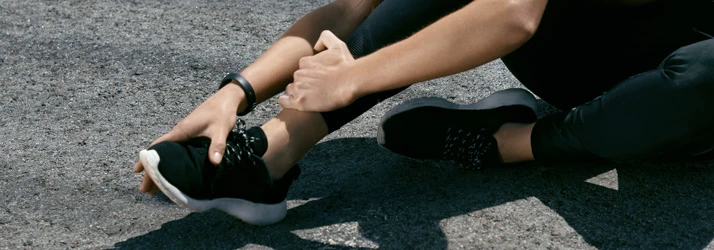Chiropractic Care for Sprains & Strains Pain in State College PA

What Can Chiropractic Care Do for Sprains and Strains?
Prevention:
Regular chiropractic adjustments in State College PA can prevent strains and sprains from happening by keeping the spine, nerves, muscles and joints working well and flexible. The good news is that we see excellent results using our combination of chiropractic and soft tissue modalities so if you’ve strained or sprained something, do come in and let us take good care of you.
Treatment:
When a patient comes into the clinic with a sprain or strain we usually treat them in 2 phases. The first phase is to reduce the pain, usually with ice, stretching and gentle chiropractic adjustments to the spine. As the patient gets better we continue with the stretching and also use massage, decompression, traction and more chiropractic adjustments.
What's the Difference Between a Sprain & Strain in State College PA?
While Sprains and Strains are very similar there is one big difference between the two; A sprain is when you have a stretch or tear in a ligament, while a strain is when you have a stretch or tear in a muscle or tendon. So sprain = ligament and strain = muscle or tendon. Besides that, the two are pretty much the same, which means that both cause pain, tenderness, swelling (and the occasional curse word).
Sprains
A sprain is when a ligament is stretched too far and/or torn. Ligaments are tough bands of tissue that connect one bone to another or connect bone to cartilage. That is why sprains usually happen close to a joint like the thumb joint or knee joint. It’s also the reason that, with sprains, you will usually hear a ‘pop’ when the sprain happens. That’s the joint popping out of place.
Common Joint Sprains:
- Wrist
- Thumb
- Knee
- Ankle
Symptoms of Sprains:
- Pain
- Swelling
- Bruising
- Restricted joint movement
- Inability to put weight on the affected joint
Common Causes of Sprains
- Uneven surfaces when running or walking
- Twisting or pivoting suddenly, like in football and soccer
- Falling and using your hand and wrist to stop yourself
- Sports such as gripping a racquet like in tennis
- Contact sports like football, boxing, or MMA
Strains
When you stretch a muscle or tendon to the point that it tears you get a strain. Similar to ligaments, tendons attach parts of your body together, in this case, bones to muscles, which is why strains involve muscles too. This is also why strains can happen both suddenly (like sprains) or gradually over a period of time as the problem gets worse.
Common Areas Associate with Strains:
- Back
- Knees
- Legs
- Feet
Symptoms of Strains:
- Pain
- Tenderness
- Swelling
- Bruising
- Muscle spasms and cramping
- Weakness in the muscle
- Limited movement of the area that was sprained
Common Causes of Strains:
- Lifting something very heavy (acute)
- A slip or fall (acute)
- Running, throwing, or jumping (acute)
- Rowing (chronic)
- Playing tennis or golf (chronic)
- Poor Posture while sitting or standing (chronic)
- Repetitive movement such as working in a factory, cutting hair, construction work, etc. (chronic)
Most Common Sprains and Strains:
- AC/SC Joint Sprains & Strains
- Neck Muscle Strains
- Cervical Joint Sprains
- Back Muscle Strains
- Back Joint Sprains
- Tennis Elbow - lateral
- Golfer's Elbow - lateral
- Little Leaguer's Elbow - medial
- Foot Muscle Sprains
- Foot Ligament Strains
- Hip Muscle Strain
- Hip Joint Sprain
- Cervical Joint Sprains
- Auto Accidents
- Whiplash
- Slips, Trips, and Falls
- Weight Lifting Injuries
Monday - Thursday
9:30am - 12:30pm
2:30pm - 5:30pm
Friday - Sunday
Closed
Hildebrand Chiropractic
1460 Martin St
State College, PA 16803



